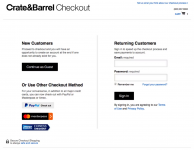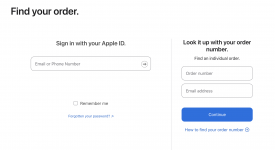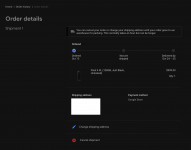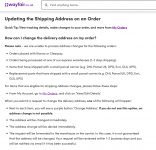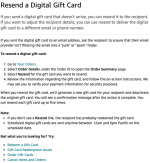d0ctrine
Diamond
- Joined
- 17.08.24
- Messages
- 107
- Reaction score
- 3,984
- Points
- 93

Alright, you aspiring fraudsters, lets get straight to it. Ive written a shitload of posts, spilling more knowledge than most people care to read, yet my inbox is still bombarded with newbies lost and confused. Theyre asking basic questions, seemingly more confused than ever about where to even begin.
In the future, I might create some roadmaps, so you can piece together my guides like a course. But dont get any ideas – Im not offering paid courses or mentorships. This checklist I will be sharing with you today is not for complete beginners. Its for those of you who understand the basics but struggle with adapting to different sites and making those first few successful transactions. Consider this a kick in the ass to get you moving in the right direction.
Lets get down to business.
Who is This Checklist For?
So, youre not a total fucking idiot. Youve got the basics down – you can sniff out a decent card, you know your way around a proxy, and youve got a hunch when a sites anti-fraud system is fucking you over. But heres the thing: youre still getting your ass handed to you. Orders canceled, sites you want to hit are still a mystery. Youre stuck in a rut, spinning your wheels, and getting nowhere fast and you have no clue what to do next. This checklist is your goddamn lifeline.
Were gonna lay out a series of checklists for you to see first before you even think about diving into any advanced shit. Think of these as the low-hanging fruit, the easy pickings thatll boost your chances of success exponentially. Ive touched on a lot of this shit in my other guides, scattered all over the forums. Compiling them here, in one spot, makes a hell of a lot more sense for you lazy bastards to easily access it.
Core Assumptions
Lets get one thing crystal fucking clear: this checklist operates on a fundamental truth - your entire mission as a carder is to look as legitimate as possible to those antifraud systems that make or break your transactions. Every single question in this guide serves that singular purpose.
But before we dive deeper into this shit, let me be clear about what Im assuming you already know. You better have your fundamentals locked down tight:

- Your cards are pristine and verified - none of that burnt or second hand bullshit
- Your proxies are clean and properly configured
- Youve got your antidetect browser game down pat - no amateur fingerprinting mistakes
The Checklist
Before scratching your head and throwing shit at the wall to see what sticks, here are the critical questions you need to ask yourself. Each one of these could mean the difference between finding a profitable method that consistently gives you success and being stuck with cancellations:
Can You Checkout With Any Email?
This is your first fucking priority when scoping out a site. Email validation is a major antifraud factor, and being able to use any email address - especially the cardholders - can dramatically lower your fraud score.
Why? Because antifraud systems get a hard-on for email addresses. Theyre one of the strongest indicators of legitimacy. Using the actual cardholders email makes you look like the real deal.
Heres what to check:
- Can you checkout as guest with any random email?
- Can you create accounts without email verification?
- Does the site send order confirmations to unverified emails?
Remember: The more closely you can match the cardholders real details, including their email, the better your chances of sliding past antifraud. This isnt just about getting through one transaction - its about understanding how these systems think and using their own logic against them.
Can You View Order Statuses Without An Account?
Order tracking without an account is your next critical intel point. Some sites are absolute bitches about this - theyll block guest order tracking, demand OTPs, or only send tracking links to the checkout email. This becomes a massive pain in the ass when youre using cardholder emails or checking out as guest.
Real-time order monitoring can make or break your operation. Without it, youre basically jerking off in the dark - no clue if your orders processing, canceled, or already shipped until its too late to pivot. Some sites have predictable order status URLs you can directly access with just the order number, while others might only need an order number and zip code. These are exactly the kinds of weaknesses you want to identify on the beginning.
Can You Change The Delivery Address After Checkout?
Post-checkout delivery address changes are your secret weapon when dealing with dirty drops. Some sites let you pull a switcheroo after the orders confirmed - changing from the billing address you used to slip past fraud checks to your actual drop location.
Heres why this matters: Using the cardholders billing address as your shipping address dramatically improves your chances of getting through antifraud. But unless youre planning to camp outside their house like a fucking stalker, you need a way to redirect that package.
Two main approaches to watch for:
- Self-service address changes in the order management system
- Customer support (more common, but requires social engineering)
- Check their FAQ pages - legitimate customers fuck up addresses all the time
- Make a small test purchase to probe customer service responsiveness
- Scout their order management system for address change capabilities
Pro tip: Customer service reps are usually undertrained minimum wage workers who dont give two shits about security protocols. A simple 'oops, wrong address' story often works wonders.
Can You Change The Email Recipient After Checkout?
For digital goods like gift cards, this check is essential. Despite tough antifraud systems, some vendors allow post-purchase changes to recipient emails as typos are a notorious problem in digital delivery. This is fucking gold - you can use the cardholders email during checkout to look legitimate, then redirect the delivery of the GCs to your own email address.
This works especially well with logs - since the email is already associated with previous legitimate purchases, the sites fraud detection sees it as trusted. Using the logs email during checkout is basically a free pass through antifraud. Once the order goes through, just change the recipient email and those gift cards will slide right into your inbox without raising any red flags.
Amazons a prime example of this vulnerability. Their strict fraud detection gets bypassed because they allow recipient email changes after purchase of digital codes. With a good log, youre practically invisible to their systems since that email has an established purchase history. Always scout these options before attempting digital goods.
Can you Change Delivery/Recipient Addresses/Email After Checking Out Via PayPal?
Heres where we venture into advanced territory. Some sites using PayPal Standard Checkout have a critical vulnerability - they let you modify shipping details AFTER PayPal authorization but BEFORE final confirmation.
- Enter cardholders real address for initial PayPal checkout
- Clear PayPals fraud detection (they trust known addresses)
- Switch to your drop address before final confirmation on the site
- Transaction processes and fraud check with PayPal already satisfied and your order goest through

Not every site offers this opportunity - many use Express Checkout which processes instantly. But finding one that does? Pure fucking gold. Always test this during your initial research phase. One successful hit using this method is worth more than a hundred failed attempts throwing random addresses at PayPals fraud detection.
Learn more here:
Conclusion
This checklist isnt just some theory - its your roadmap for identifying vulnerable targets and maximizing success rates. Every single check we covered represents a potential weakness that can be exploited or a defense you need to bypass.
Remember: Antifraud systems are built by humans, run by humans, and have human weaknesses. Your job is to find those cracks and slip through them like a digital ghost. The more intel you gather upfront, the less likely you are to waste time and resources on impossible targets.
Now get out there and do your fucking homework. Your success rate is directly proportional to how thoroughly you scout your targets. And for fucks sake, dont skip steps because youre feeling lazy - thats how amateurs get caught. d0ctrine out.



